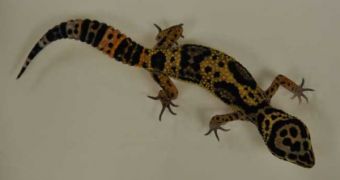Lizards are very well known for the fact that they can shed their Tails when faced with predators. They do so either when their tail is caught, or simply as a decoy, to buy themselves sufficient time to get away. But, while this behavior is in itself amazing, geckos have refined it even further. Even after being separated from their bodies, the tails still execute a number of acrobatic figures, including flips, jumps and lounges, apparently oblivious to the fact that they are no longer attached to a central nervous system, LiveScience reports.
According to a new paper, appearing in the latest issue of the respected journal Biology Letters, these rhythmic and complex movements may be triggered by something inside the tail itself. Until now, there have been very few studies dealing with the relationships between spasm in severed tails and muscular activities. Experts Anthony Russell, from the University of Calgary, and Tim Higham, from the Clemson University, say that the impulses to move come from the very end of the tail, where it has been separated from the body.
At that location, they identified a portion of the spinal cord, so they propose that a control center must exist in that region, which triggers the peculiar behavior. Furthermore, they say, it may be that the lizard's central nervous system is constantly overriding this center, preventing it from moving the tail abnormally. Once the main connection is no more, there is nothing stopping that portion of the spinal cord from making the tail execute any number of acrobatics stunts.
“Much is known about the ecological ramifications of tail loss, such as distracting predators, storing energy reserves and establishing social status but little is known about the pattern and control of movement of automized gecko tails. What we've discovered is that the tail does not simply oscillate in a repetitive fashion, but has an intricate repertoire of varied and highly complex movements, including acrobatic flips up to 3 centimeters [1.1 inches] in height,” Russell reports.
“An intriguing, and as yet unanswered, question is what is the source of the stimulus that initiates complex movements in the shed tails of leopard geckos. The most plausible explanation is that the tail relies on sensory feedback from the environment. Sensors on its surface may tell it to jump, pivot or travel in a certain direction,” Higham adds.
“When the tail is doing flips and everything else that could enhance the distraction of the predator so the lizard can get away. If the tail moves in a really complex way, the predator would try to get the tail and when it can't get it, would go away. Then the lizard could come back and eat the tail,” he concludes.

 14 DAY TRIAL //
14 DAY TRIAL //